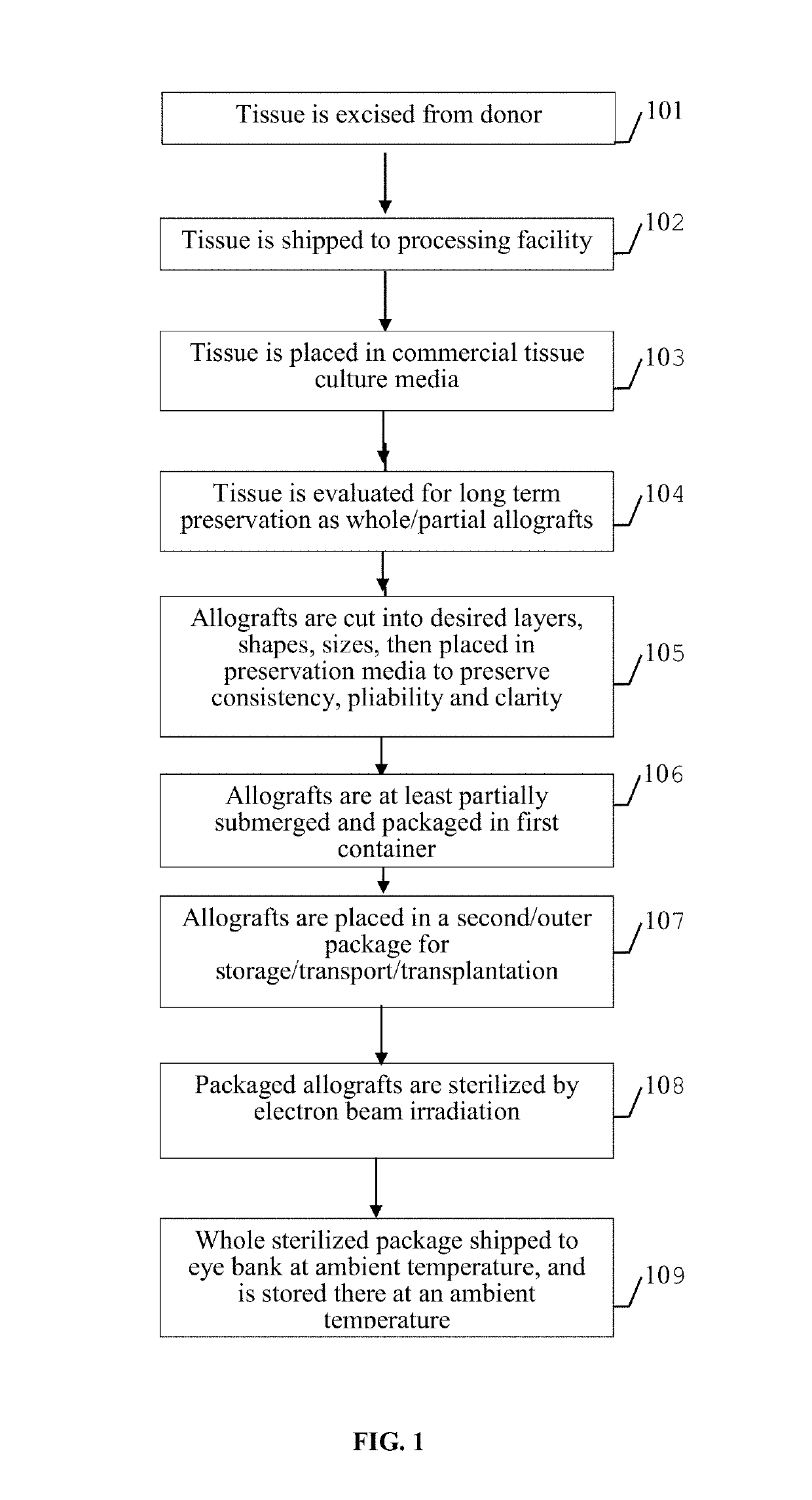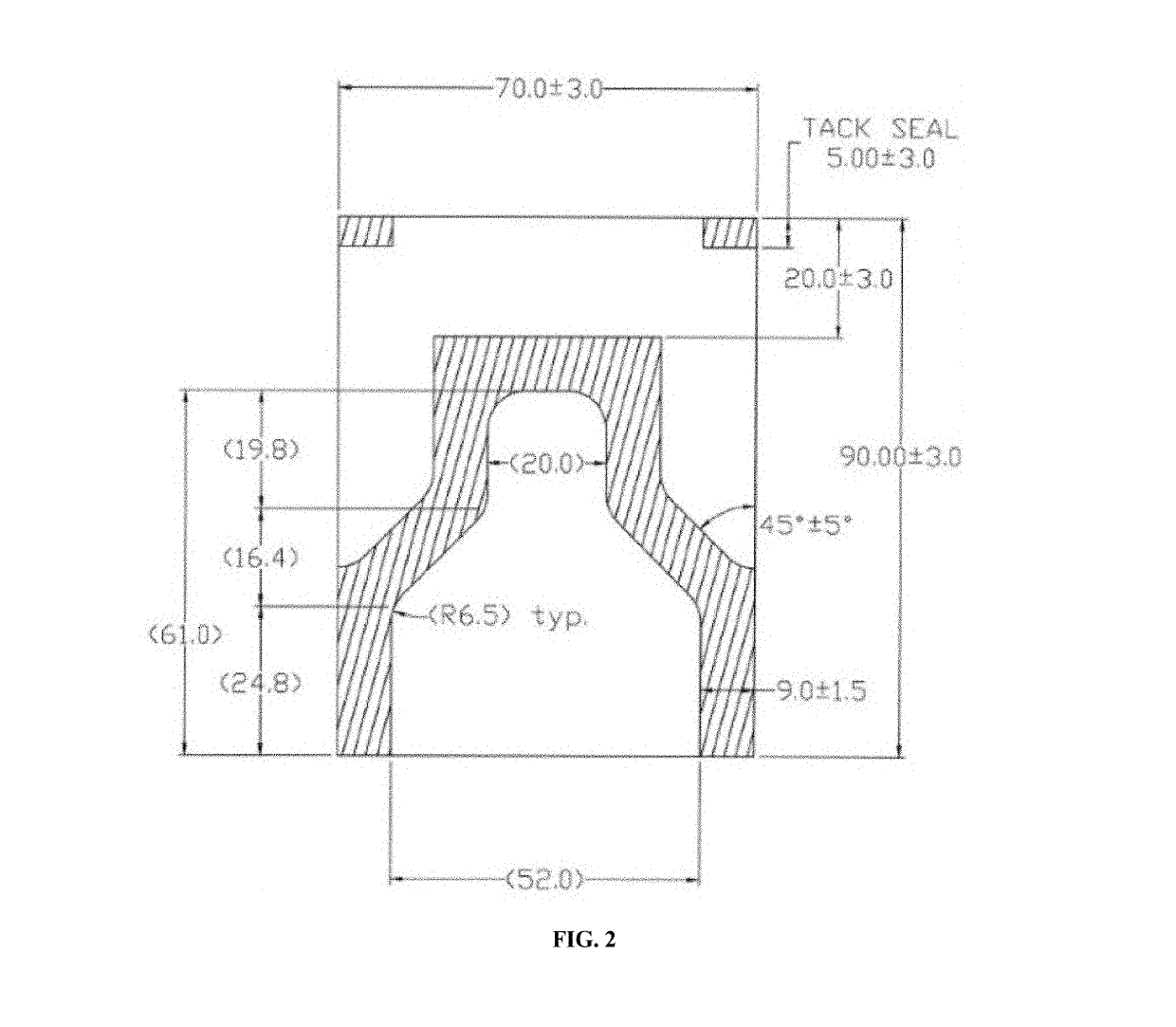Method for preparing mammalian tissue for storage, implant, and transplant
a technology of collagen tissue and mammalian tissue, which is applied in the field of processing isolated mammalian collagen tissue, can solve the problems of unsuitable transplantation, unsuitable corneal tissue, and unsanitary conditions, and achieve the effect of reducing storage temperature and increasing supply of transplantable tissu
- Summary
- Abstract
- Description
- Claims
- Application Information
AI Technical Summary
Benefits of technology
Problems solved by technology
Method used
Image
Examples
example 1
ical Study
[0123]The MatTek EpiOcular™, a cultured, 3-dimensional in vitro human cell-based corneal model, was used to evaluate the potential of test articles to cause toxicity and / or ocular irritation of the new storage media after electron beam irradiation. The objective of this study was to assess the ocular irritation potential of the novel tissue storage media recombinant human albumin and compare it to 1). a known irritant, benzalkonium chloride and 2). the comparable product being offered for allograft transplants stored in pooled / processed human albumin. A positive control, 1% benzalkonium chloride (BC), was effective, reducing cell viability over three time periods. Therefore the positive control, 1% BC, is categorized as a severe irritant. Exposure of ocular tissues to rHSA had no effect on tissue viability up to and including the 300 min exposure. In addition, rHSA exposure did not induce a substantial release of IL-1α above what was observed with the negative control exce...
example 2
d Tissue Clarity
[0124]A pre and post-treatment comparison of 18 donor corneas was performed. The clarity of each tissue was evaluated and compared using dark field microscopy. Each cornea served as its own control, first as fresh tissue and then again following electron beam irradiation. Overall, there was a net change in clarity of −2.7% following treatment, p=0.002. The maintenance of corneal clarity utilizing this new processing and sterilization regimen is sufficient for clinical use.
example 3
d Tissue Histology
[0125]Corneal tissues subjected to the sterilization process were fixed in formalin and evaluated by an ocular pathologist after hematoxylin and eosin staining. The ocular pathological examinations were masked to fact that the tissue was subjected to a novel sterilization process. Tissue was deemed normal by histological examination. There were no identified differences between electron beam irradiated tissue and normal cornea.
PUM
| Property | Measurement | Unit |
|---|---|---|
| total volume | aaaaa | aaaaa |
| temperature | aaaaa | aaaaa |
| total volume | aaaaa | aaaaa |
Abstract
Description
Claims
Application Information
 Login to View More
Login to View More - R&D
- Intellectual Property
- Life Sciences
- Materials
- Tech Scout
- Unparalleled Data Quality
- Higher Quality Content
- 60% Fewer Hallucinations
Browse by: Latest US Patents, China's latest patents, Technical Efficacy Thesaurus, Application Domain, Technology Topic, Popular Technical Reports.
© 2025 PatSnap. All rights reserved.Legal|Privacy policy|Modern Slavery Act Transparency Statement|Sitemap|About US| Contact US: help@patsnap.com



